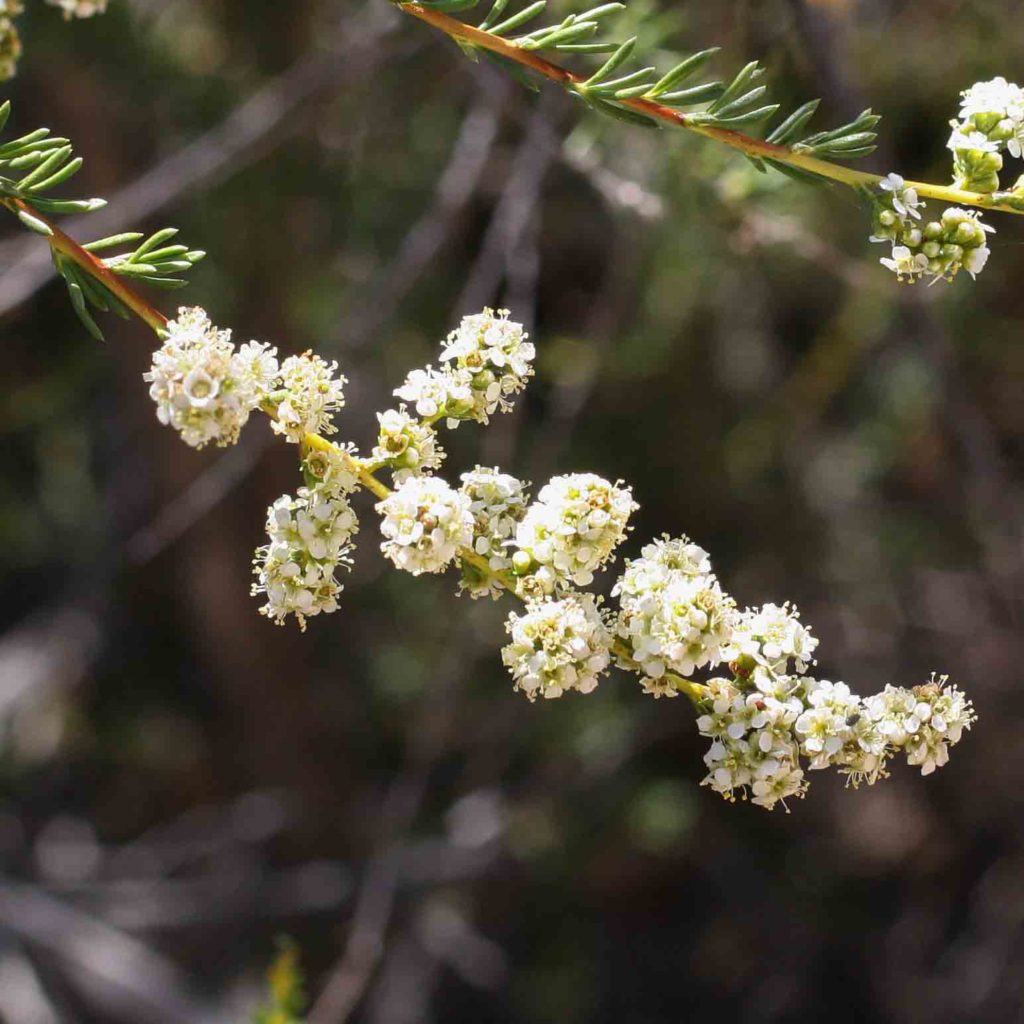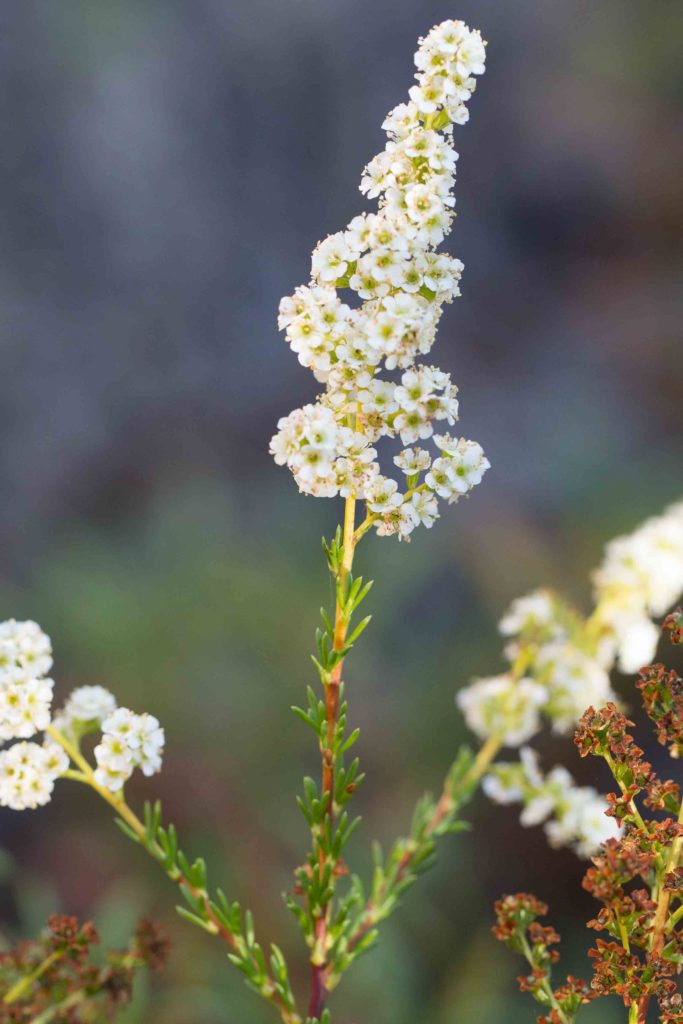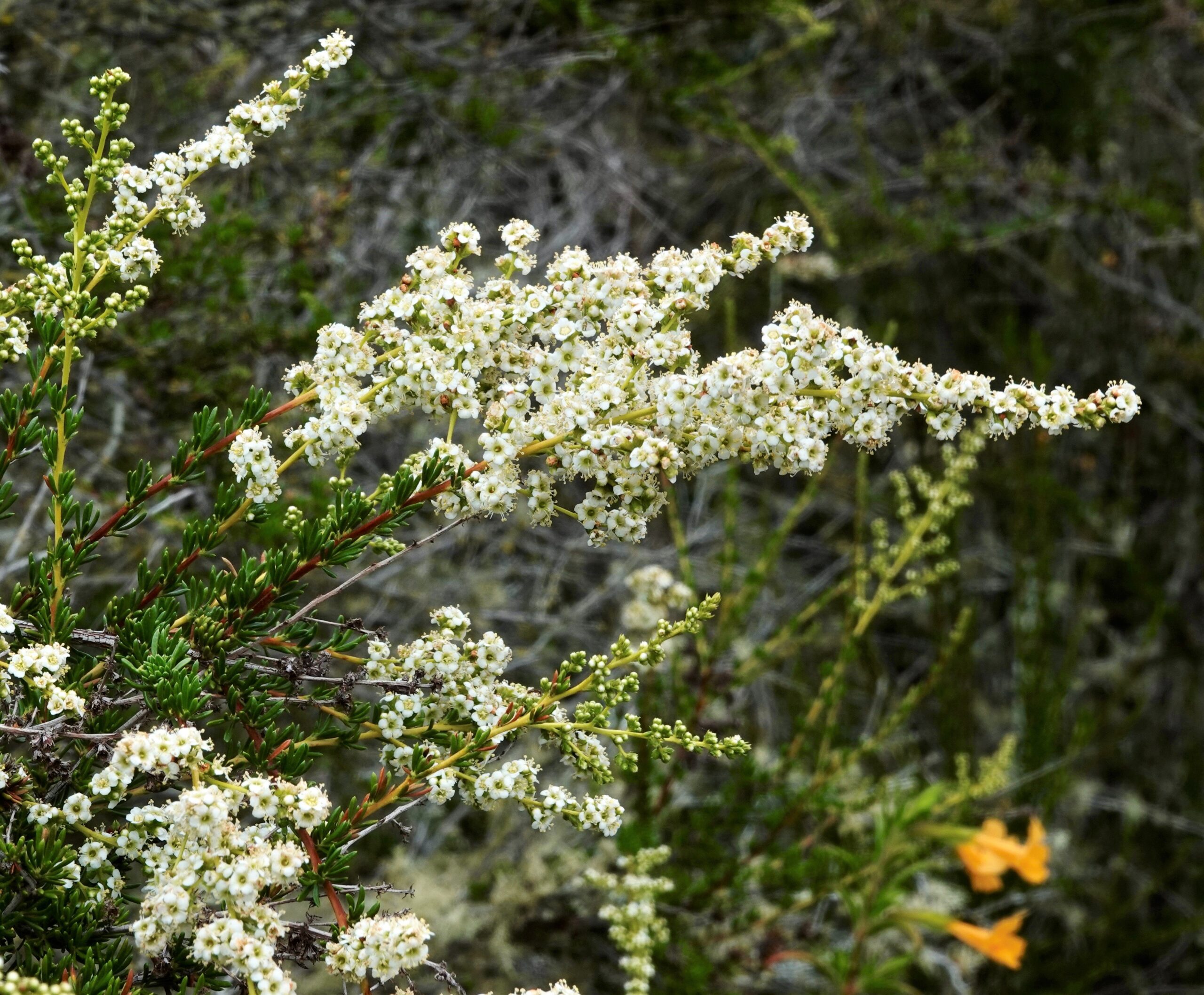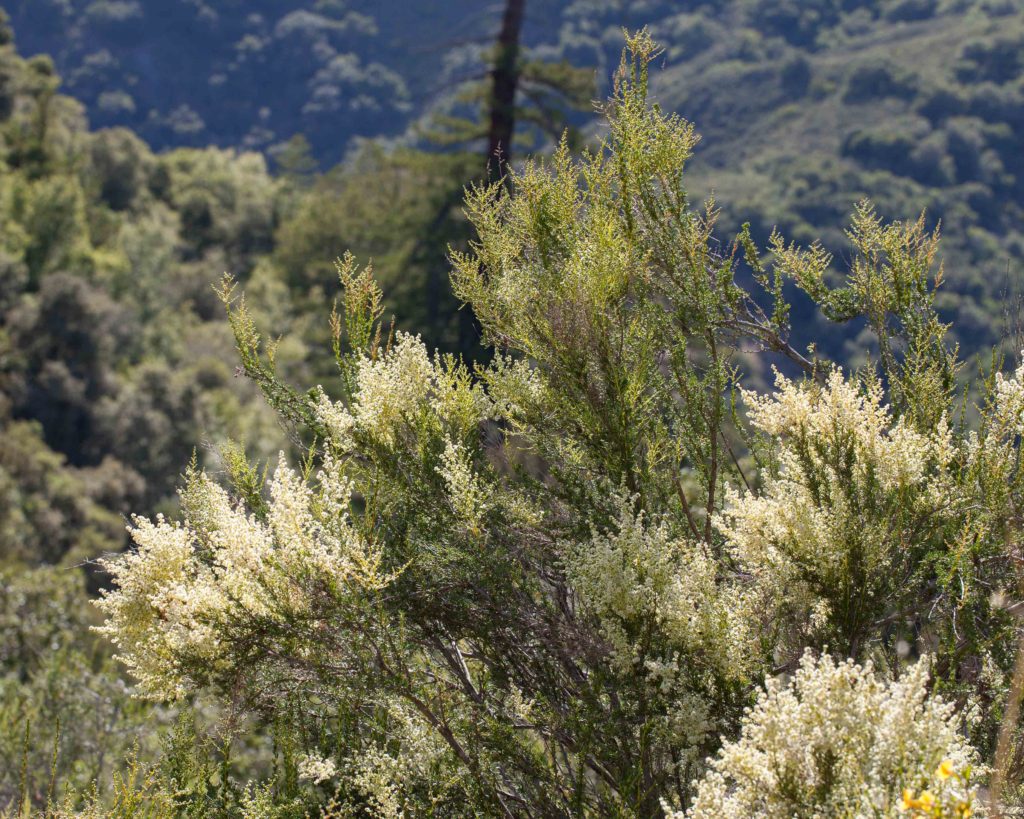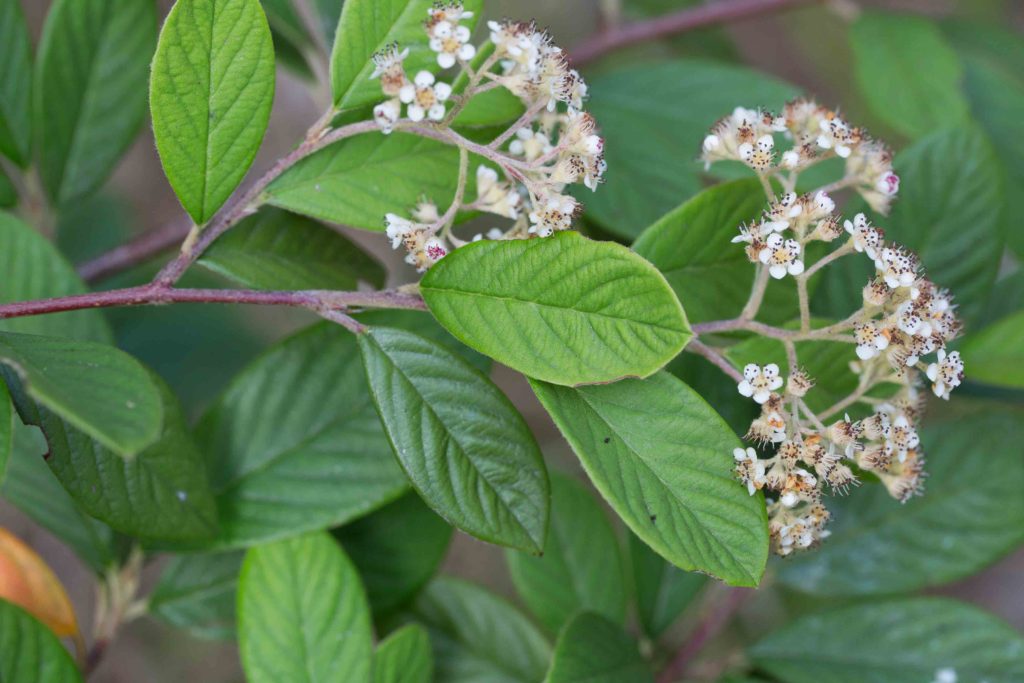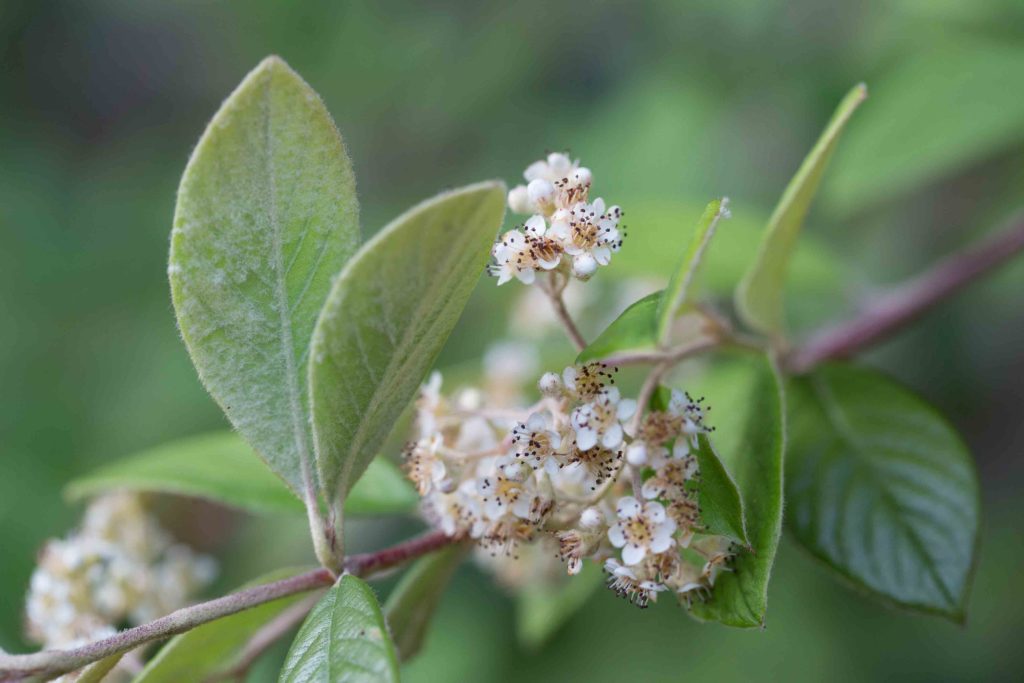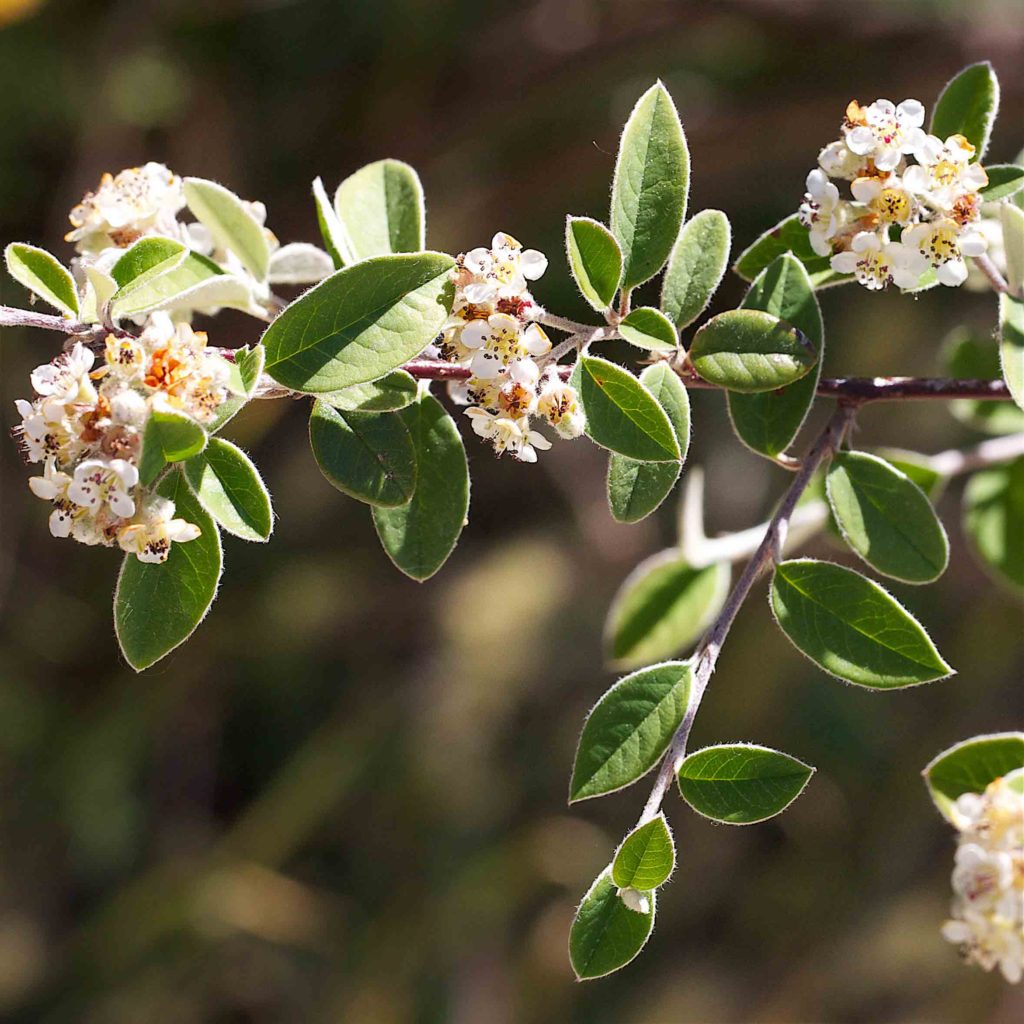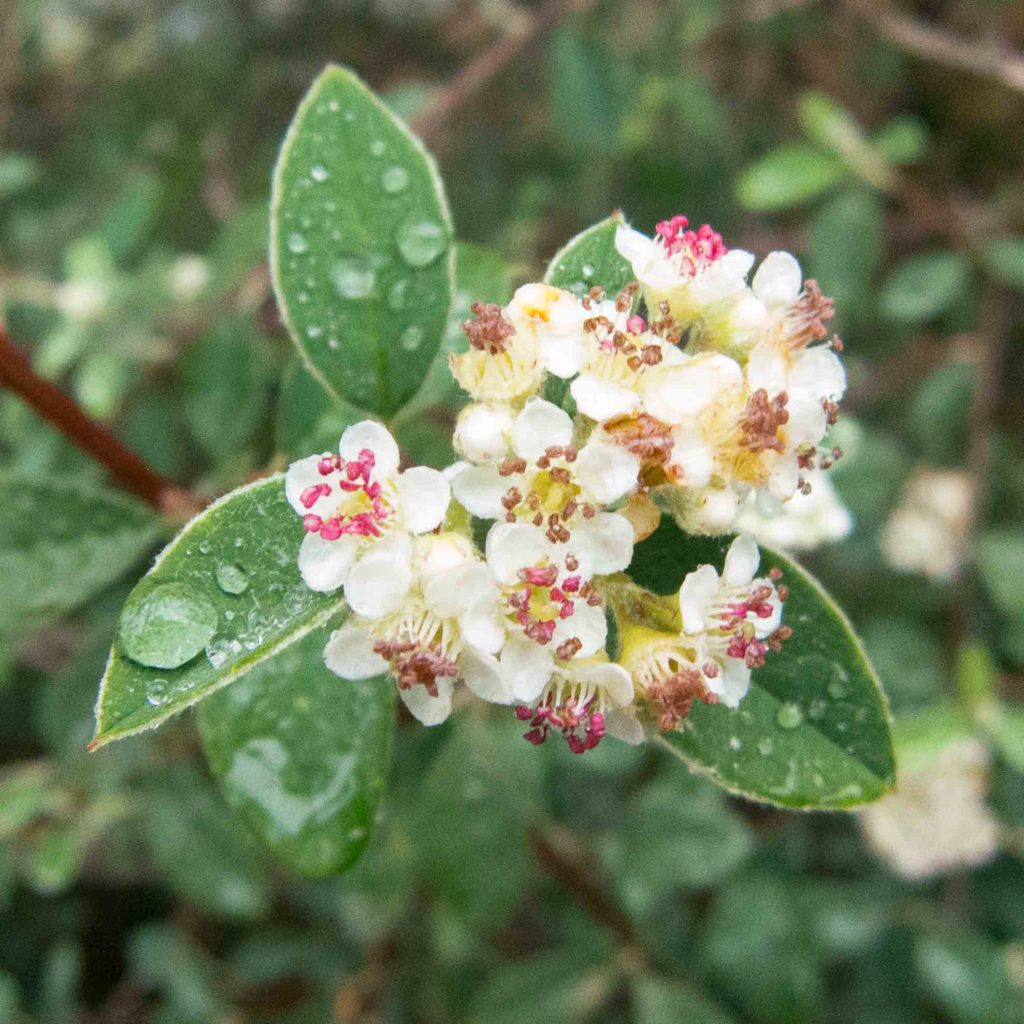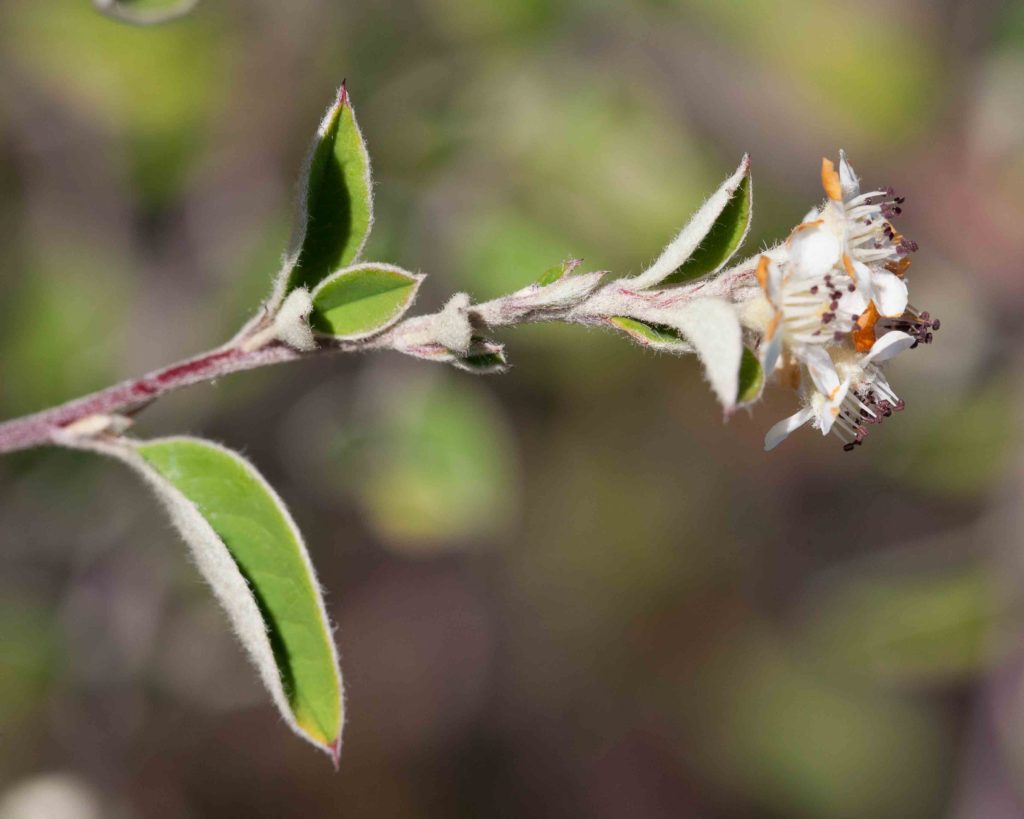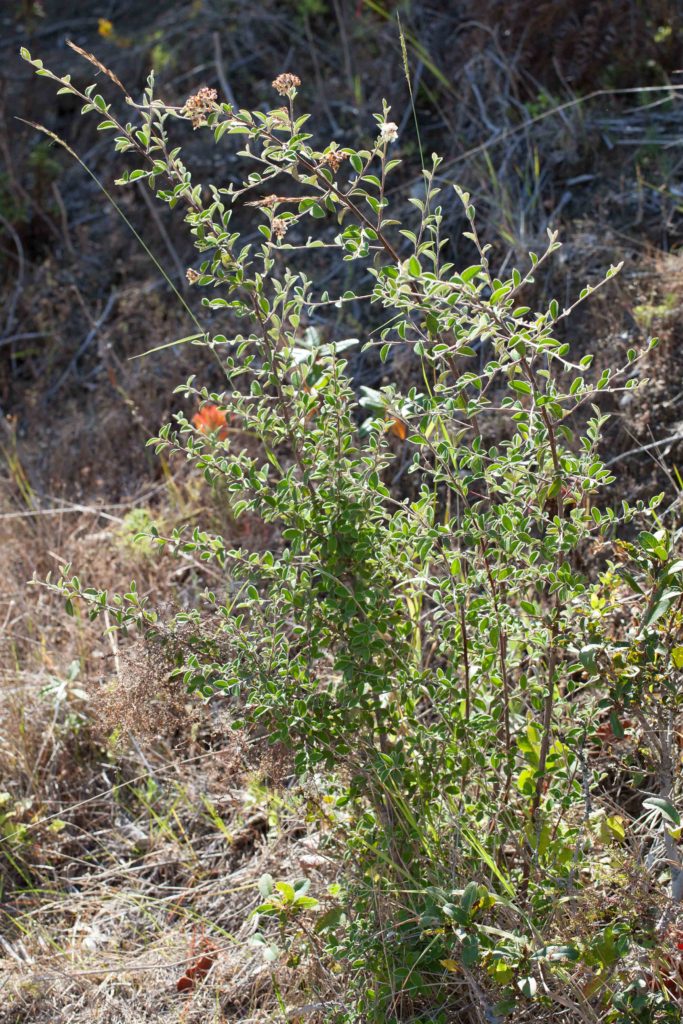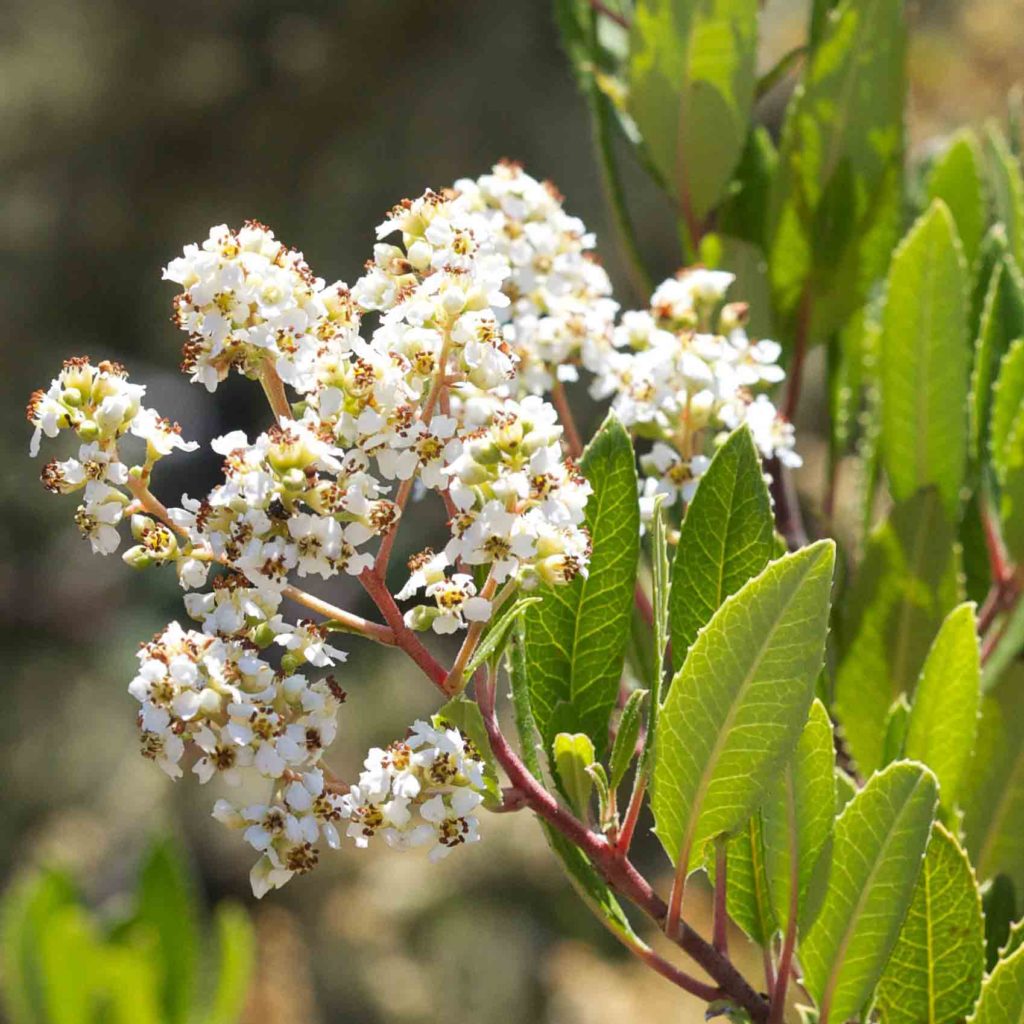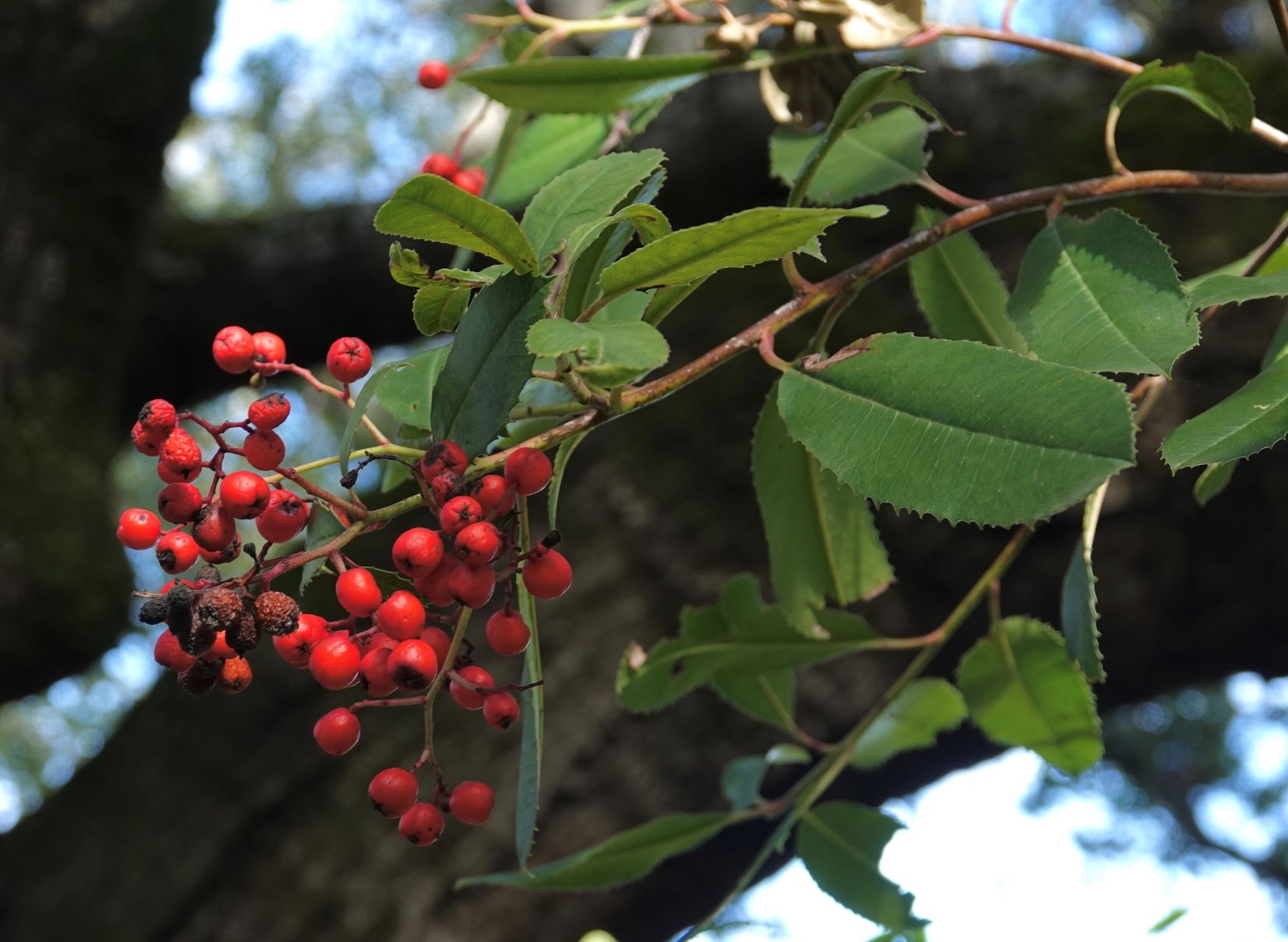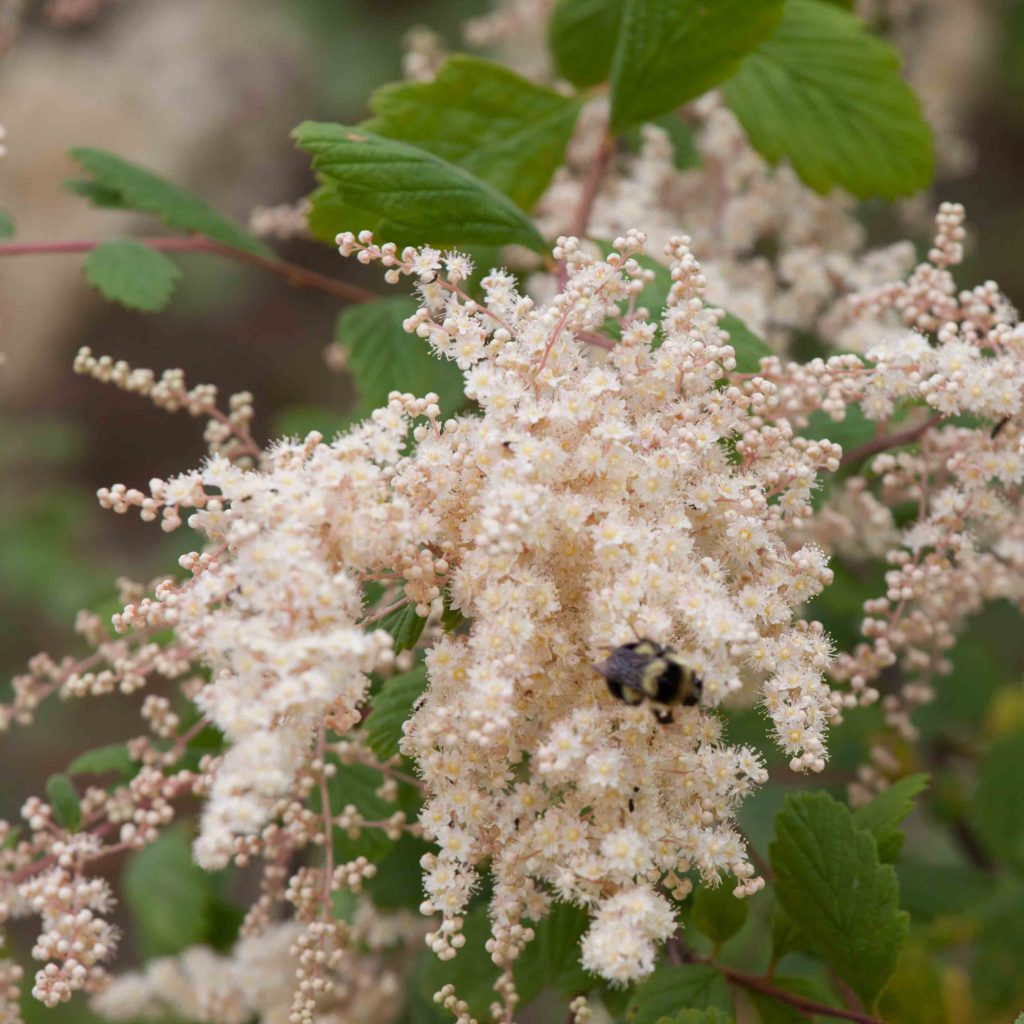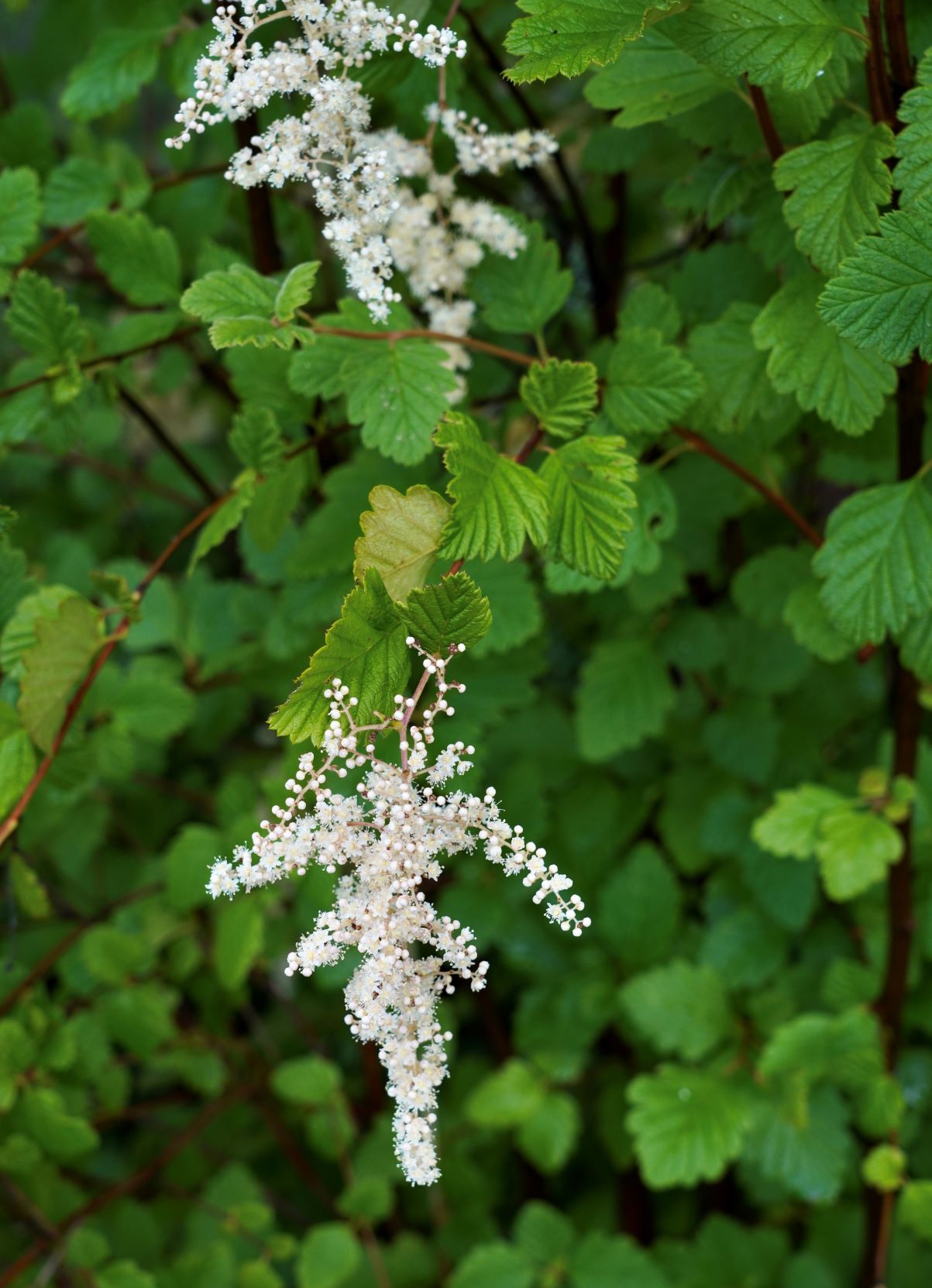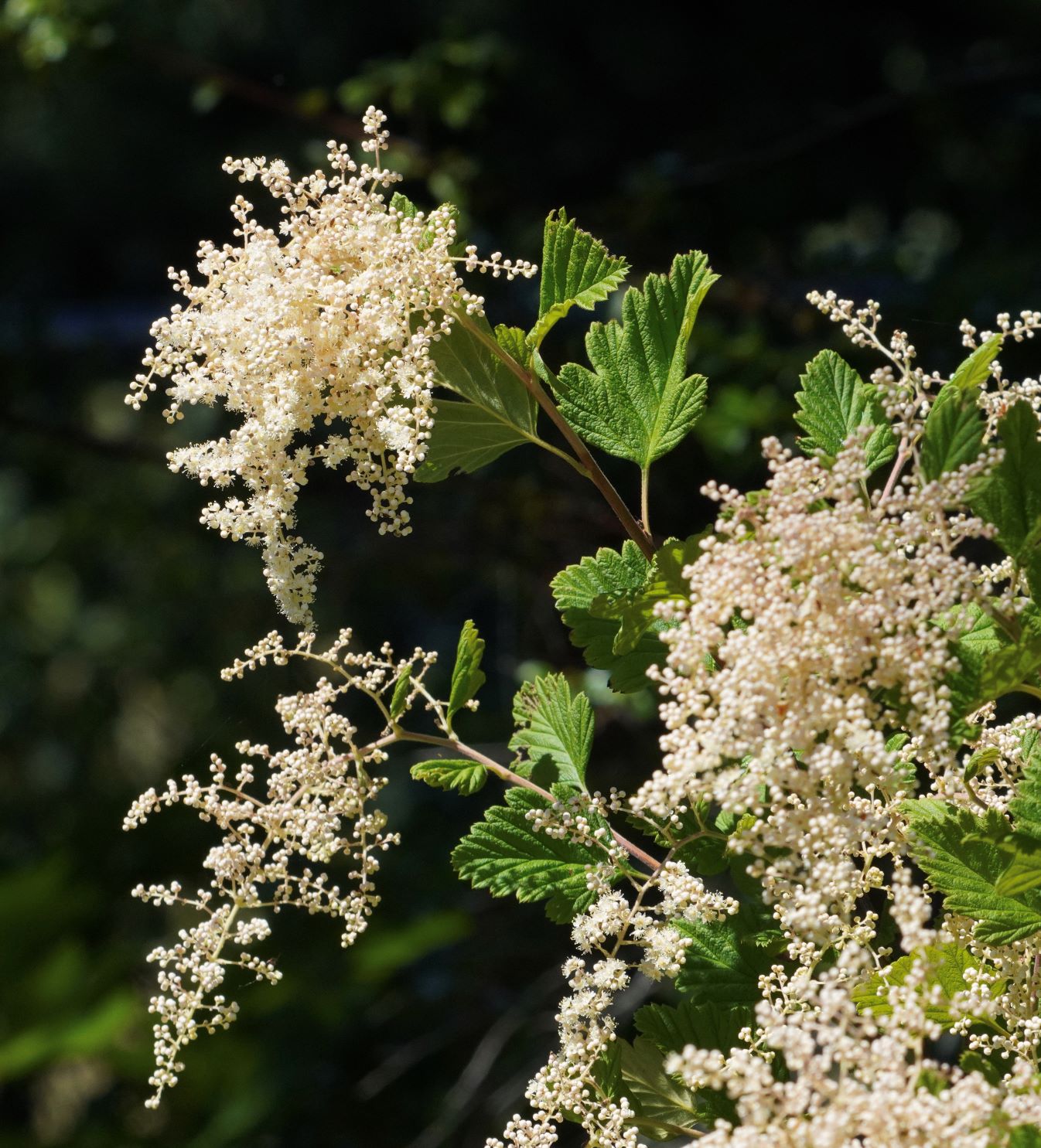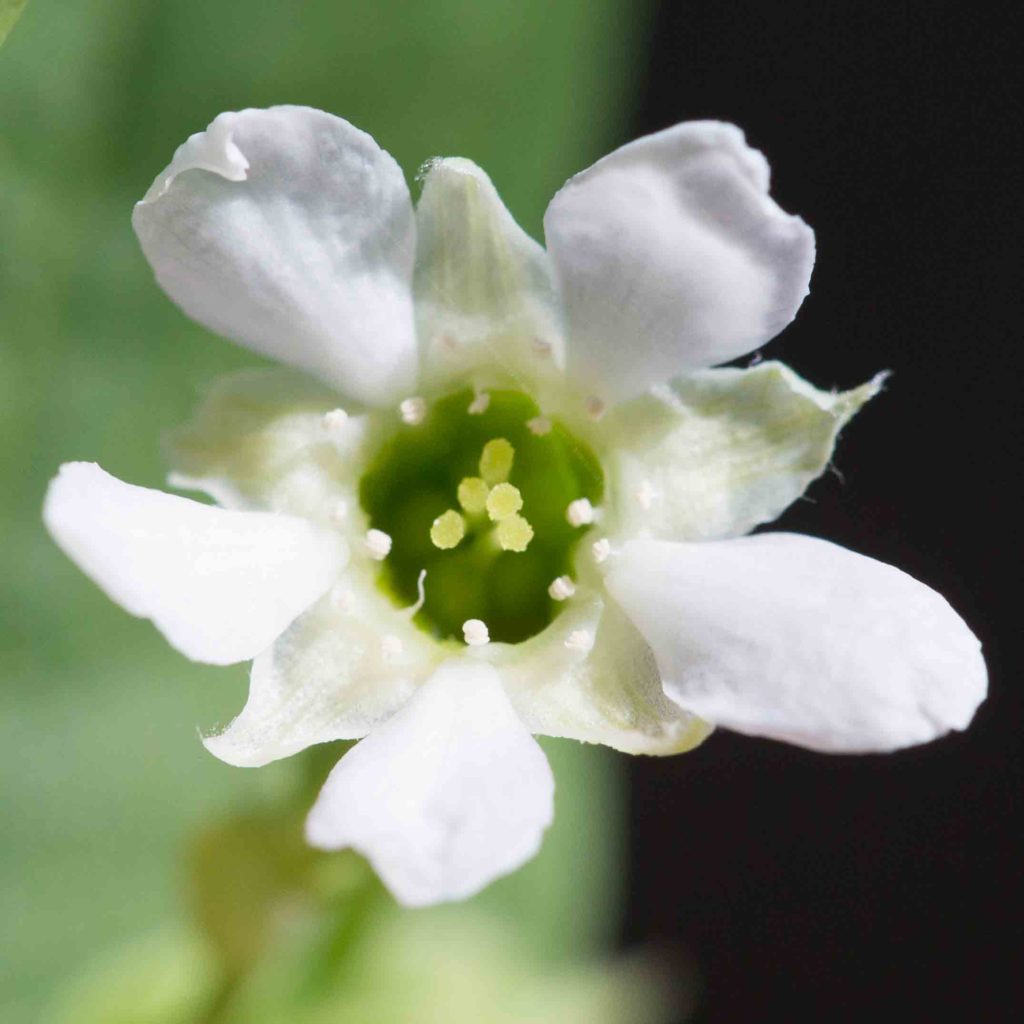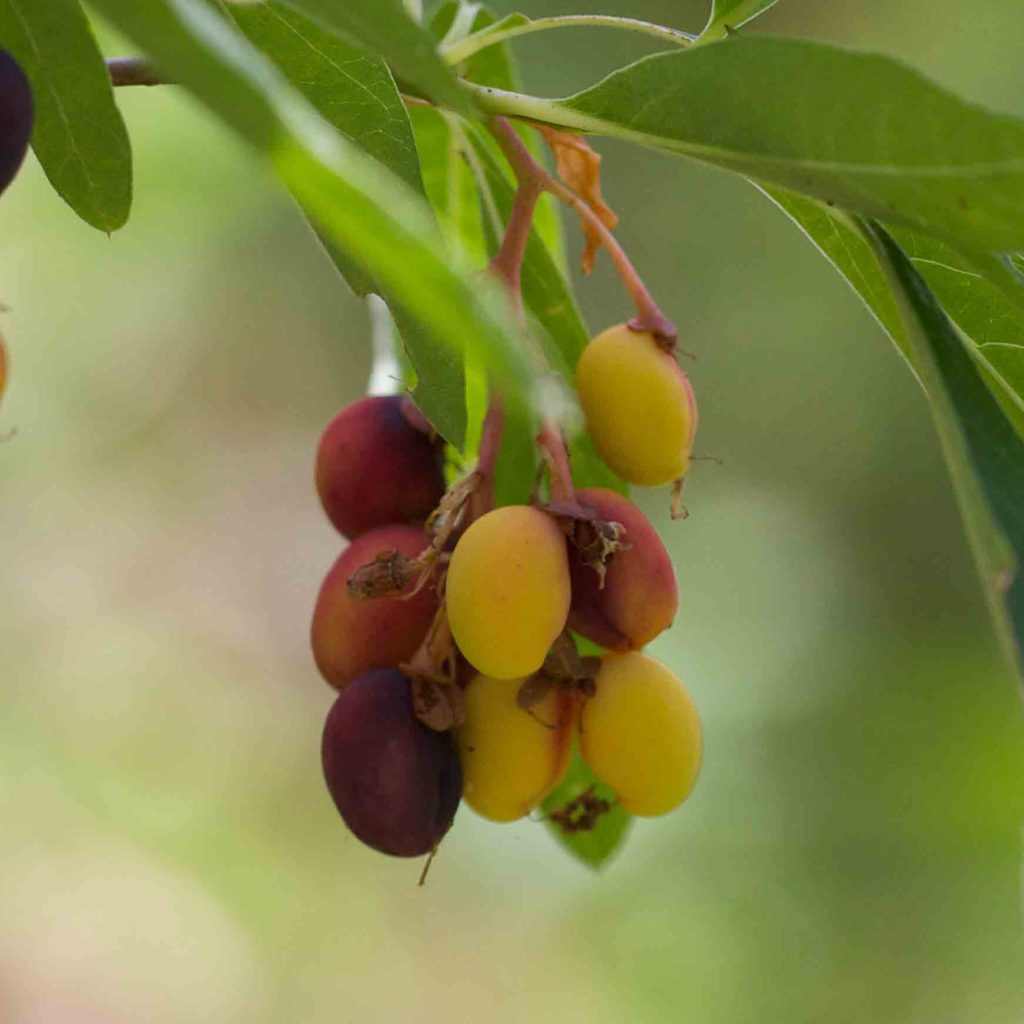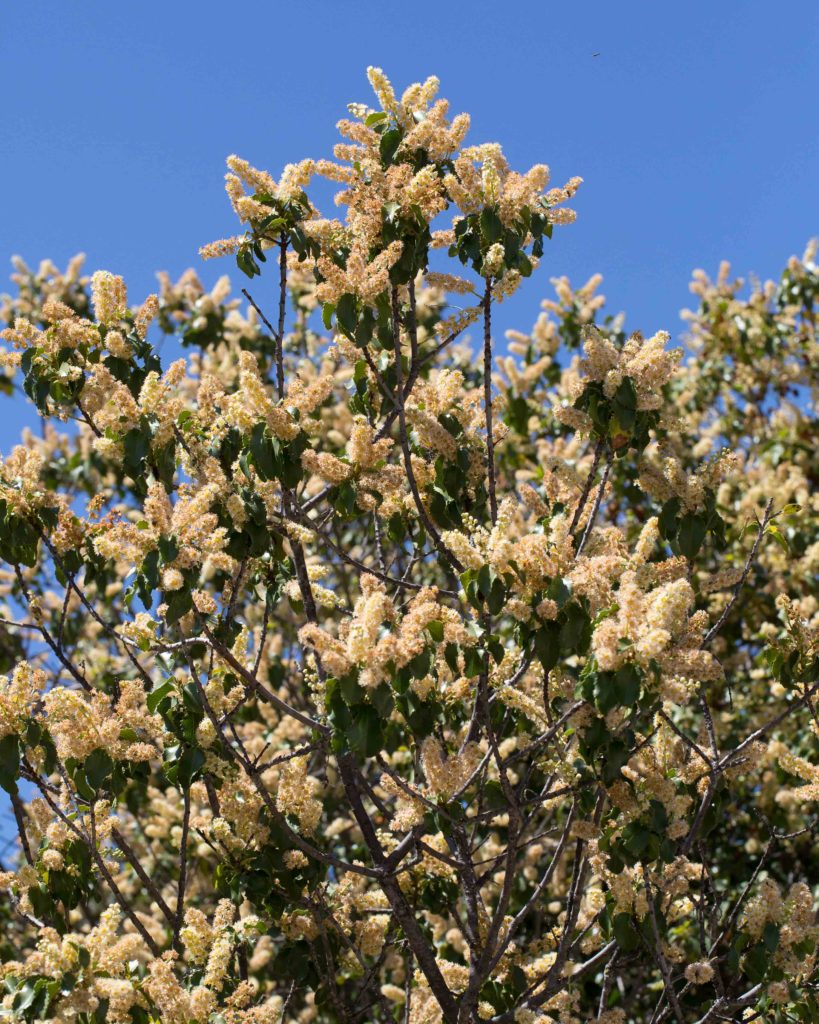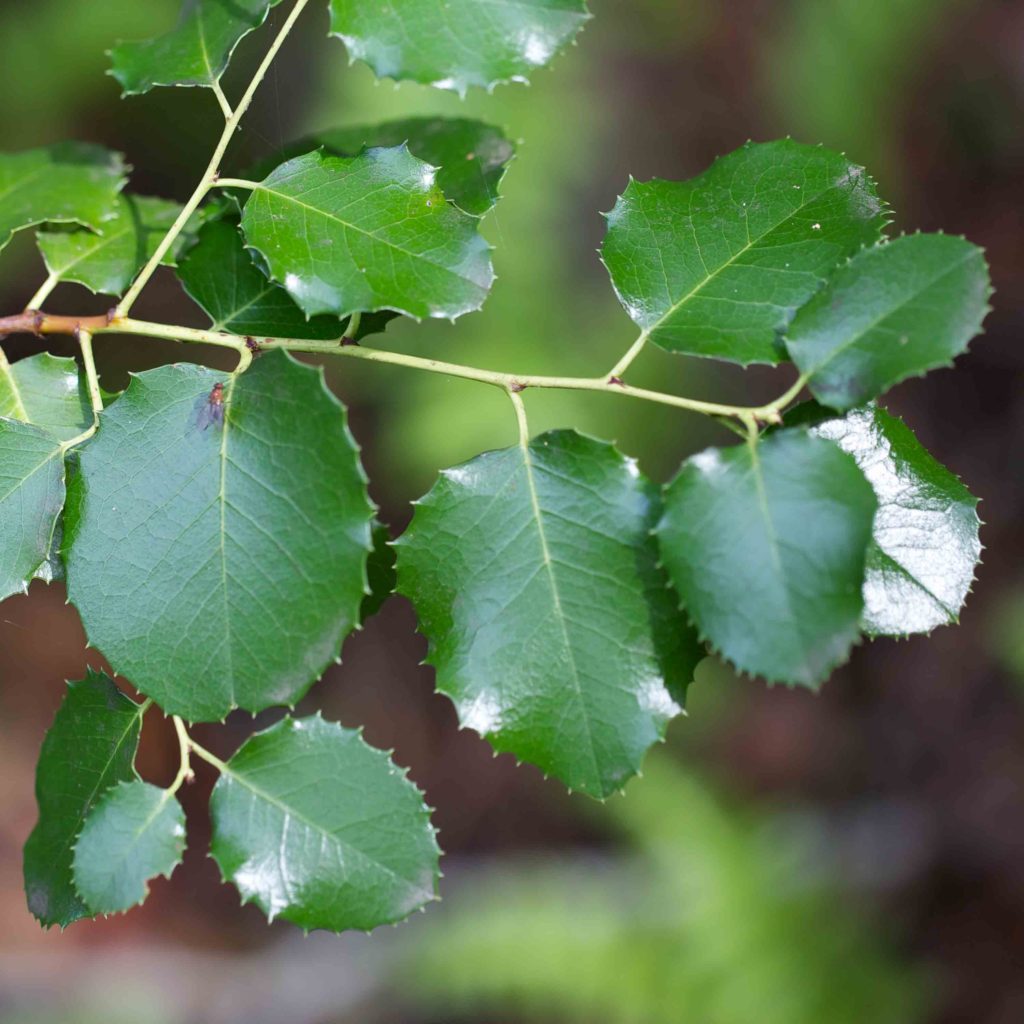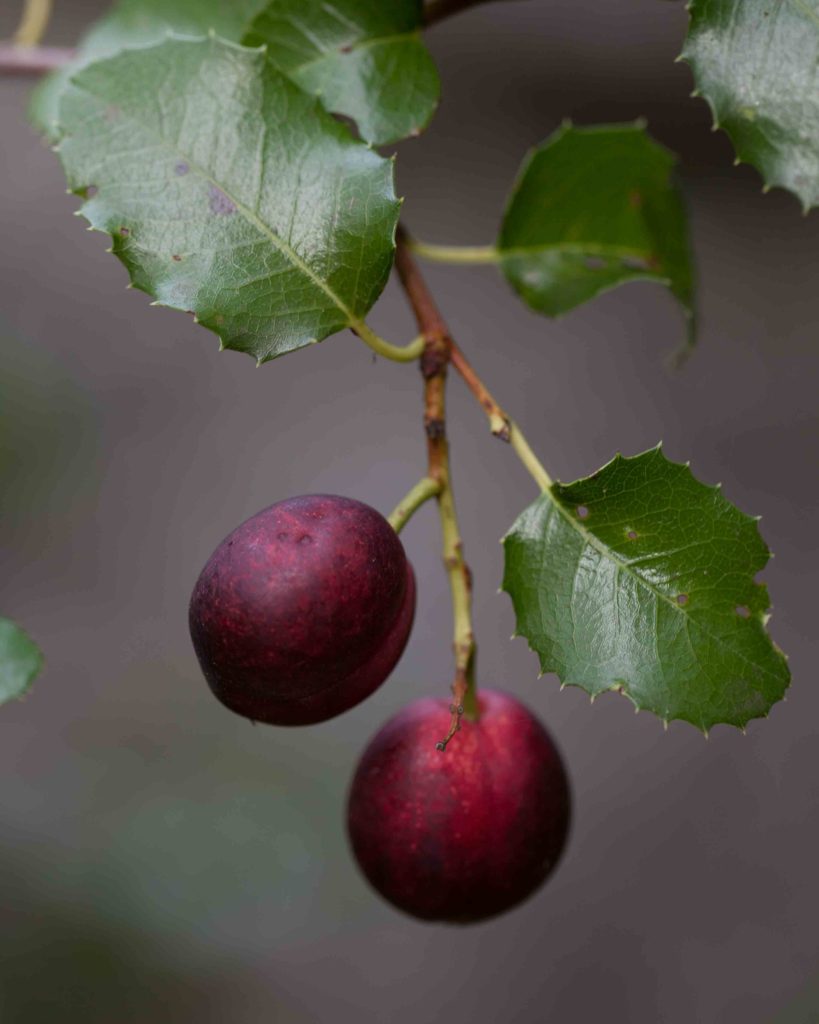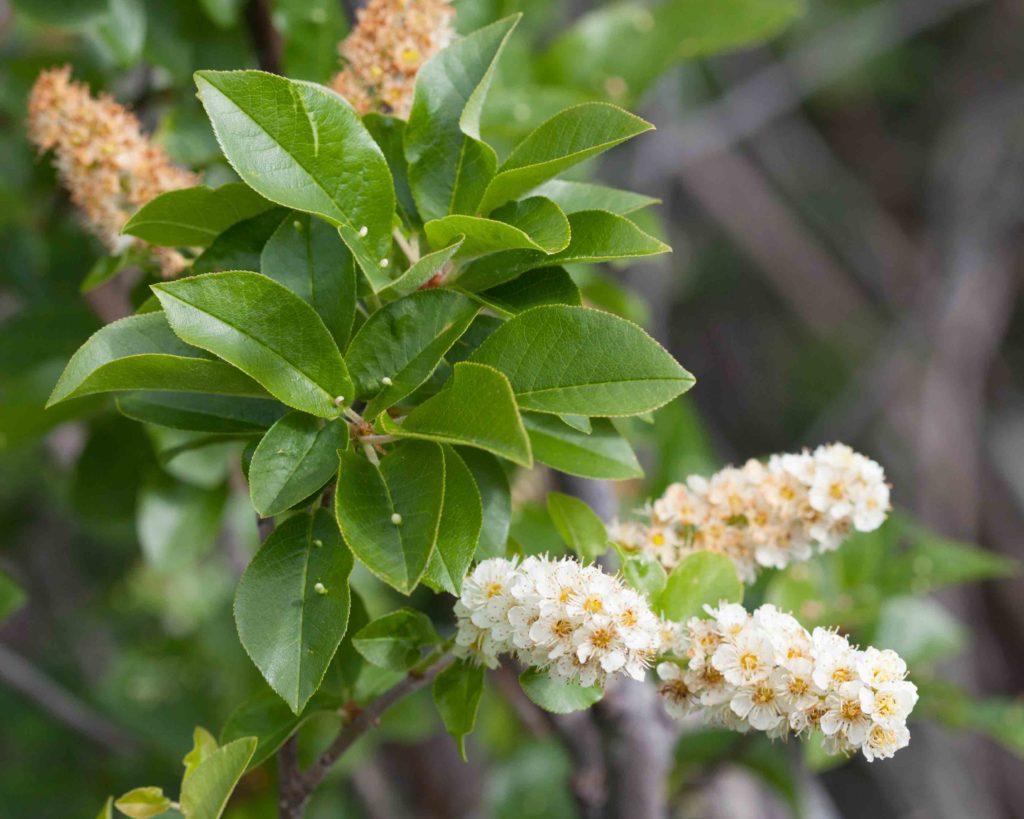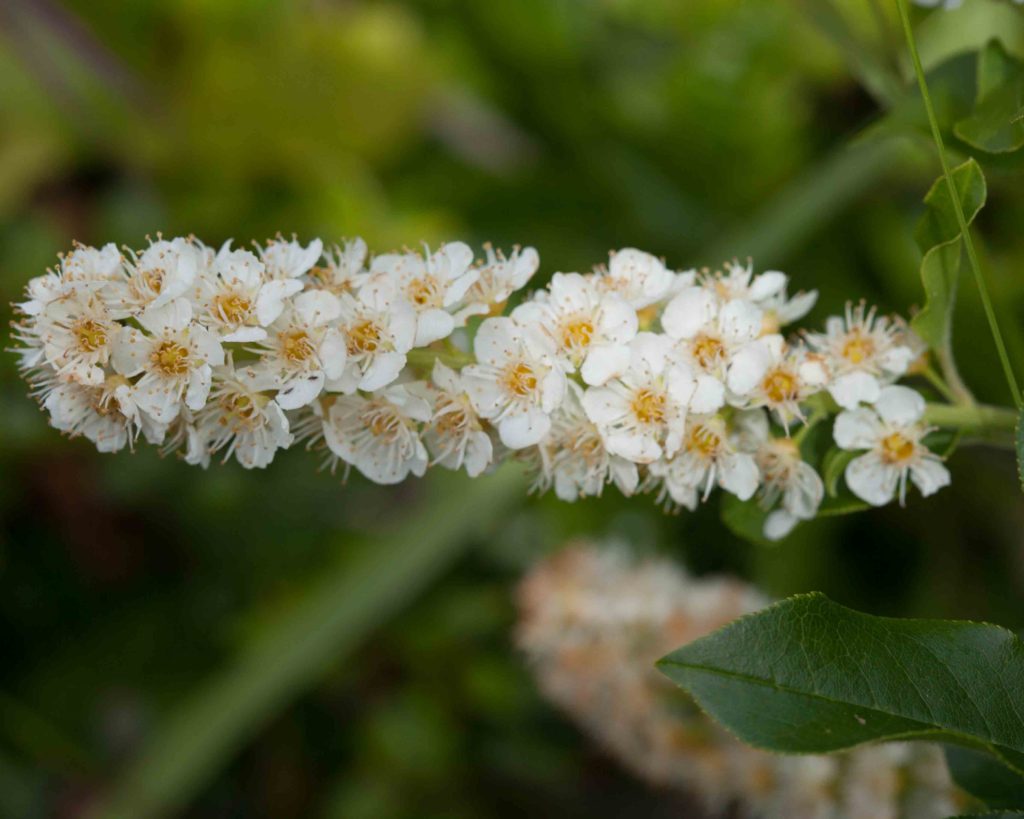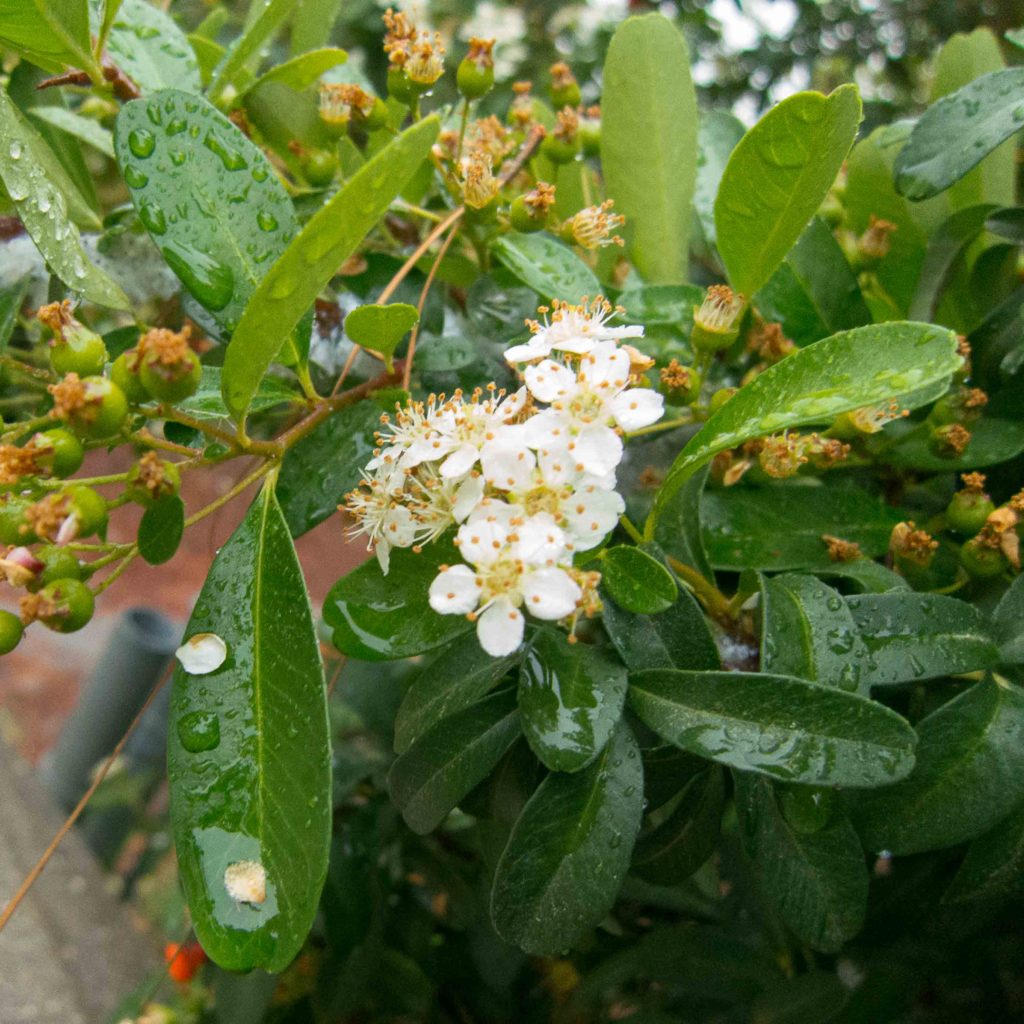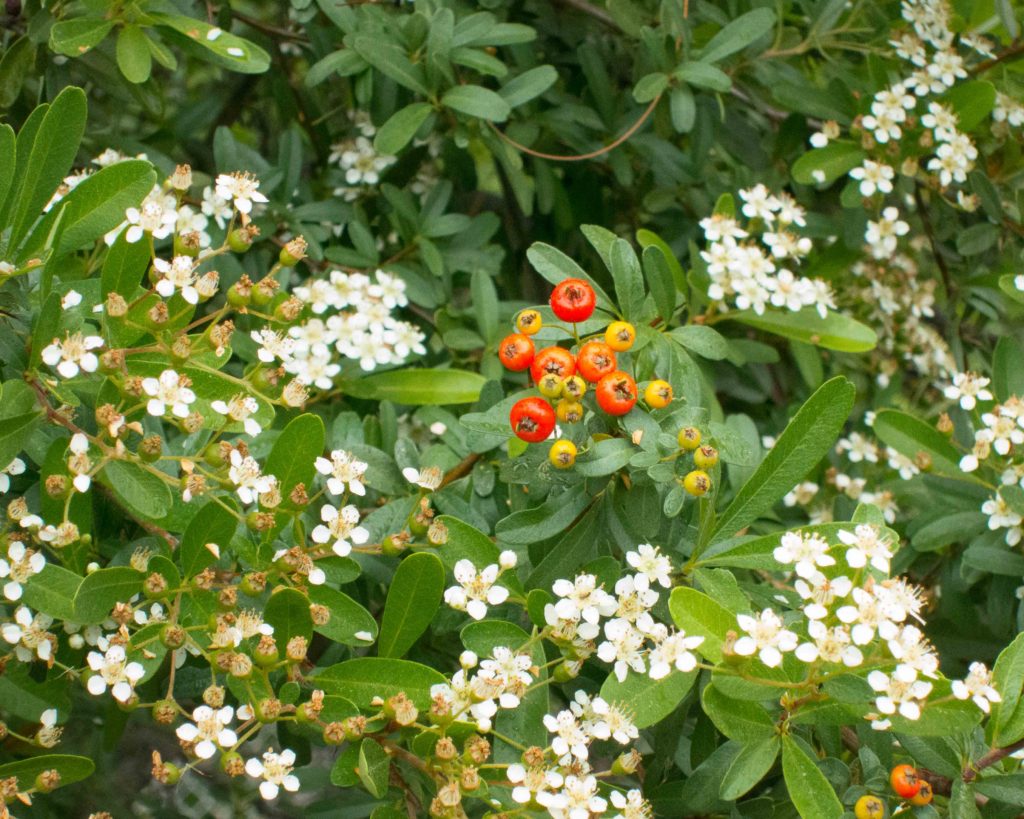Rosaceae: Rose Family — Shrubs & small trees
Plants in the Rose family include many of our best-loved ornamentals and fruits. The flowers usually have 5 petals, 5 sepals and numerous stamens, attached to a saucer- or bowl-shaped hypanthium. Often the oval leaves are toothed, and there is a stipule at the petiole base.
Chamise – Adenostoma fasciculatum var. fasciculatum
Blooms:
May–July
Plant Height:
< 4 m
Flower Size:
Large clusters
Origin:
Native
Habitat:
Chaparral
Notes:
This is a large shrub, very common in chaparral. It has clusters of small, narrow, pointed leaves (the “fascicles” which give the plant its scientific name). The masses of tiny white flowers produce a spectacular display in early summer. Like some other chaparral plants, Chamise is “allelopathic”, i.e. it produces a toxin that inhibits the growth of other plants in the vicinity. This explains the lack of other plants in the shade of chamise.
Like certain Manzanitas, Chamise develops a burl (although invisible because underground). A burl is a repository of dormant buds, that are stimulated by fire. In this way, the plant may resprout, even if the fire destroyed all the above- ground parts. Another result of a severe fire is that the heat may vaporize the allelopathic toxins. This explains how it is possible for certain “fire- following” herbaceous plants to flourish and put on a spectacular display for a few years afterwards. Photo #3 by CJH.
Late Cotoneaster – Cotoneaster lacteus
Blooms:
May–July
Plant Height:
1–9 m
Flower Size:
Small clusters
Origin:
China
Invasive?
Yes – moderate
Habitat:
Escape from cultivation
Notes:
This can be a large shrub, loosely branched. It makes clusters of small white flowers, followed by bright red berries. The leaves are elliptic to obovate, 35–95 mm long. They are dark green above, pale tomentose below, and with sunken veins. Frequently cultivated and sometimes escaping.
Silverleaf Cotoneaster – Cotoneaster pannosus
Blooms:
May–July
Plant Height:
< 4 m
Flower Size:
Small clusters
Origin:
China
Invasive?
Yes – moderate
Habitat:
Escape from cultivation
Notes:
This is a loosely branched shrub, with clusters of small white flowers, followed by bright red berries. Its leaves are smaller than those of Late Cotoneaster (Cotoneaster lacteus, see above), elliptic to obovate in shape but only 15–32 mm long. They are dull bluish-green above, white-tomentose below. Its veins are not sunken. Frequently cultivated and sometimes escaping.
Toyon / Christmas Berry – Heteromeles arbutifolia
Blooms:
June–Aug
Plant Height:
< 10 m
Flower Size:
Large clusters
Origin:
Native
Habitat:
Semi-dry brushy slopes and canyons
Notes:
This is a common large shrub or small tree. Throughout the year, it is easily identified by its tough, elliptic leaves with markedly serrated margins. It produces a mass of attractive white flowers in early summer. The berries turn bright red in late fall to early winter — hence the plant’s alternative common name. Photo #2 by CJH.
Ocean Spray / Cream Bush – Holodiscus discolor var. discolor
Blooms:
May–Aug
Plant Height:
1.5–6 m
Flower Size:
Large clusters
Origin:
Native
Habitat:
Woods and rocky places, coastal and inland
Notes:
A large, spreading shrub. The flowers are small, creamy white but sometimes pink-tinged. They are found in large, dense, drooping panicles up to 25 cm long. The leaves are distinctive, ovate to obovate, with a rounded or truncate base and toothed margins. It has been facetiously suggested that the name “Ocean Spray” should be reserved for plants found by the immediate coast. But any difference in common names is not reflected by any difference in the appearance of the plants themselves. Photos #2-4 by Cliff Halverson.
Oso Berry – Oemleria cerasiformis
Blooms:
Feb–Apr
Plant Height:
up to 6 m
Flower Size:
Small
Origin:
Native
Habitat:
Shady slopes and canyons
Notes:
A large fragrant shrub or small tree with an open growth habit. It is dioecious, with male and female flowers borne on separate plants. The flowers are white and bell-shaped, in distinctive pendulous clusters. From a distance, the male and female flowers look similar. But the male flower (photo #1) has stamens, while the female (photo #2) has pistils, surrounded by sterile stamens. Fruits are yellow, turning reddish and finally blue-black, edible if no better alternative can be found. Photo #3 by CJH.
Holly-leaved Cherry – Prunus ilicifolia subsp. ilicifolia
Blooms:
Apr–May
Plant Height:
< 9 m
Flower Size:
Large cluster
Origin:
Native
Habitat:
Dry slopes, especially inland
Notes:
A large erect shrub or small tree. Like Western Chokecherry (Prunus virginiana, see below), this has large clusters of creamy-white flowers, in elongated racemes. The fruit is red to yellow, edible but giving no great pleasure. The leaves are evergreen, leathery, ovate to round and spiny-margined. If crushed, they give off a strong, bitter almond smell. These leaves could be confused with Coast Live Oak, but they lack the oak’s tufts of hairs in vein axils on the lower surface.
Western Chokecherry – Prunus virginiana var. demissa
Blooms:
May–July
Plant Height:
up to 6 m
Flower Size:
Large cluster
Origin:
Native
Habitat:
Rocky slopes, woodland and canyons
Notes:
A large erect shrub or small tree. Like Holly-leaved Cherry (Prunus ilicifolia, see above), this has large clusters of creamy-white flowers in elongated racemes. The fruit is dark red to black, astringent and should not be eaten straight off the tree. The leaves are 3–10 cm, thin, elliptic to oblanceolate with finely serrated but not spiny margins. The leaves contain hydrocyanic acid and are therefore toxic.
Chinese Firethorn – Pyracantha fortuneana
Blooms:
Feb–June
Plant Height:
< 4 m
Flower Size:
Large cluster
Origin:
China
Habitat:
Escape from cultivation
Notes:
A large evergreen shrub. The oblong-obovate leaves are 15–60 mm long, with obtuse or notched tip. Small white flowers are born in large dense racemes, producing bright red berries later in the year. If the moisture and temperature are right, the berries may ferment. This may lead to tipsy waxwings, and even robins too drunk to fly safely.
